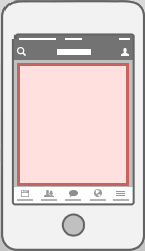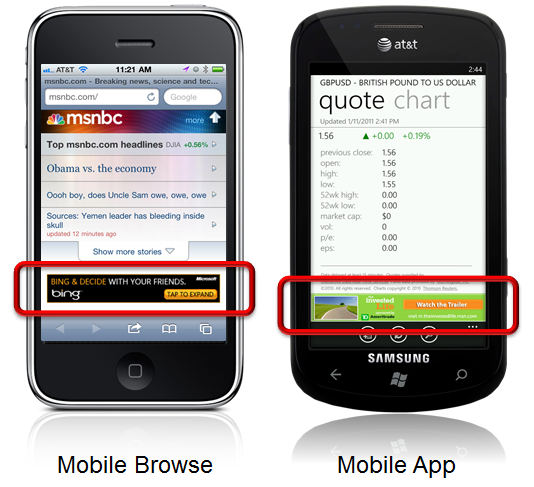 Mobile advertising is not only alive and well but is fast becoming a key component to a growing amount of successful digital media plans. It’s been predicted that 1.75 billion people worldwide will own a smartphone by the end of 2014. Mobile phone users are rapidly switching over to smartphones as devices become more affordable and 3G and 4G networks advance. It’s this smartphone explosion that gives brands the opportunity to connect with consumers in a real-time, real-world environment. It’s an advertiser’s dream.
Mobile advertising is not only alive and well but is fast becoming a key component to a growing amount of successful digital media plans. It’s been predicted that 1.75 billion people worldwide will own a smartphone by the end of 2014. Mobile phone users are rapidly switching over to smartphones as devices become more affordable and 3G and 4G networks advance. It’s this smartphone explosion that gives brands the opportunity to connect with consumers in a real-time, real-world environment. It’s an advertiser’s dream.
But it’s not all plain sailing, and in some ways, mobile is a complex advertising method. One of the reasons advertisers and marketers are faced with challenges is because, from an advertising perspective, mobile is so different to web. Browser cookies aren’t available to follow people and get to know their likes and dislikes; user attention is short and frequent, spread between apps and browsers, maps and messaging; and although smartphone users check their phones up to 150 times a day, it’s often only for seconds at a time.
Is frequency capping on mobile the same as display?
A single frequency cap cannot be used across both mobile app and mobile browser based advertising in the same online advertising campaign. In order to accomplish this goal two unique campaigns will need to be created, one for mobile app and the second for mobile browser.
What targeting can I use on mobile?
You can target (and report on) in-app and device-optimized web impressions by:
- Device Type - Phone, Tablet, or Desktops & Laptops
- Device Make and Model - Apple iPhone, HTC Droid Incredible, etc.
- Carrier - Verizon, Sprint, etc.
- Connection Type - Carrier-based or wifi/static
- Mobile Operating System - Android, iPad, etc.
- Mobile Browser - Android, Blackberry, etc.
System (i.e., device type, device make/model, OS, browser, carrier and connection type), frequency, geography, day part, segments, and test/control targeting all work for in-app and device-optimized web campaigns. However, targeting based on tag position and tag query strings is possible only for device-optimized web campaigns.
It may be a complicated arena, but can you afford not to get stuck in? There are a few things that you can do right now to make sure you capitalize on mobile advertising:
Utilize rich media.
Banner ads (static or dynamic) have their place in the mobile world, but with tiny screens a much better option is to turn them into rich media ads. Tap-to-expand banners or mobile video ads will give you more engagement. Learn more guidelines and requirements for mobile advertising creatives
Add a voice.
Users love interactive voice capabilities if they’re done well, and voice is set to be the next big thing in advertising. Not only is there the novelty factor, but voice recognition can be an effective user interface in a mobile device.
Embrace portability.
You can no longer just assume that people will see your digital advertising if you focus on PC and laptop platforms. Most people don't need desktops the way they once did, so cater for a combination of a smartphone and tablet devices. Multi-screen digital advertising is here to stay and continues to grow in both importance and popularity. Online advertising now involves any device, anywhere.
Apps are where it’s at.
Apple’s iOS and Google’s Android have more than a million apps each and global consumer reach is around 400 million. Can you afford to ignore this?
Although things are changing quickly, you need to embrace mobile advertising now if you want your online strategy to work over the coming years.




